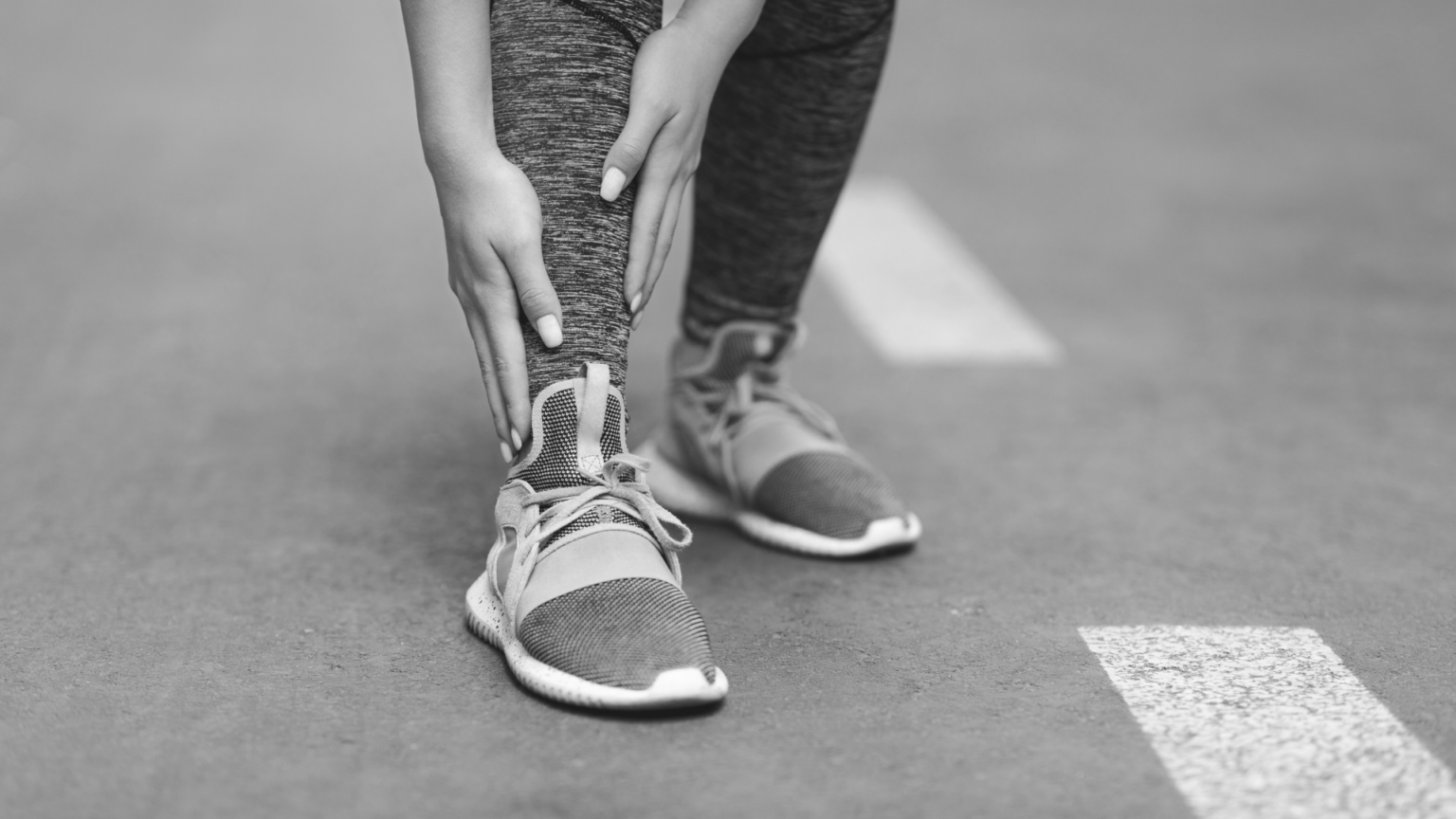
Shin pain stretches only work when the target is clear and the plan is tight. Shin splints treatment lives and dies on how you load your lower leg, how you pace your return to running, and how well your tissues slide and contract under pressure.
Medial tibial stress syndrome (MTSS) is irritation along the inside border of your tibia. Think periosteum, deep flexors, and the tibialis posterior tendon line getting cooked by sloppy volume jumps and poor foot control. The fix starts with simple wins: unload hot spots, restore soft-tissue glide, retrain the foot-ankle complex, and scale your mileage like a pro. No mystery—just sequence and discipline.
Here’s the play: you’ll get shin pain stretches that actually change range, plus activation drills so the new range sticks. You’ll learn where these go in your week, how many reps to run, and how to slot them around runs or lifts so the effect compounds instead of fades. You’ll also see where shin splints compression socks help (venous return, bounce control) and where they don’t (they won’t fix weak feet). Tape can help with awareness; progression fixes the problem.
SCIFR comes in as your accelerator—my assessment-to-action loop that upgrades the plan without bloating it. You’ll see the front end of SCIFR here—screen the pattern, correct the fault, integrate the change—enough to move the needle fast while we keep the full framework behind the curtain.
Bottom line: use these shin pain stretches to create space, then own that space with strength, then protect it with smart programming. Start where your shins actually live—on the inside edge of the bone—and build out from the foot. Stack small wins daily and the sting fades while your stride gets quiet, springy, and strong.
Shin pain stretches only matter if they hit the right strip: the inner (posteromedial) border of the tibia—most often the middle-to-distal third. Picture a long, finger-length band of ache, not a single pinpoint. Classic medial tibial stress syndrome (MTSS) lives there—along the periosteum where deep calf structures tug with every step.
Soleus (deep calf): Its fascia anchors along the medial tibial border; every foot strike adds traction.
Tibialis posterior (deep, behind the shin): Same traction story on the inner tibia; when tone is high and glide is poor, it irritates the periosteum.
Not the big front muscle (that’s tibialis anterior). Soreness there is a different pattern. MTSS pain tracks the inner edge, not the front.
Primary evidence: MTSS is characterized by posteromedial tibial pain linked to traction from the deep flexors and bone-stress response in the cortical tibia. See Moen et al., Med Sci Sports Exerc; Winters et al., Br J Sports Med; Franklyn & Oakes, Sports Med.
Set safe weekly running volume, add the right shin pain stretches, and auto-build your 7-day plan. Includes a simple *SCIFR* micro-timer.
Rule of thumb: keep next-day pain ≤ 3/10. If ≥5/10 in any field, drop to deload.
Educational only, not medical advice. If pain localizes sharply or night pain increases, get evaluated.
MTSS behaves like a bone-stress reaction + fascial traction loop. When soleus/posterior tibialis tighten and their fascia sticks, they tug on the tibial border and ramp local bone stress. SCIFR targets each piece—in order—so load can return cleanly.
Compression (ischemic pressure): down-regulates over-protective tone in soleus/post tib → less traction.
PNF isometrics: you own the new length; not a limp hold—contract/relax into controllable range.
IASTM (light scrape): improves glide between muscle/fascia layers so they stop yanking the periosteum.
Eccentrics: capacity work (bent-knee calf lowers) so tissue absorbs load instead of the bone edge.
Breath reset: vagal down-shift so tone changes stick and pain sensitivity calms.
Primary evidence: Eccentric calf work improves load tolerance; progressive return beats full rest for bone-stress spectra; manual therapies can improve short-term function when coupled to loading. See Newman et al., Am J Sports Med (risk & load); Rathleff et al., BJSM (eccentrics/PNF principles in lower-limb tendinopathy); Moen et al., MSSE (graded return).

Use this sequence three to four days per week; on run days, place it after your session or as a separate PM block. On non-run days, lead with it before strength work.
Soleus pin & breathe: Sit or half-kneel. Thumb or ball on inner calf, midway down. Slow nasal inhale, long relaxed exhale x 6–8 breaths per hot spot.
Tib-post line glide: Cross-legged, knuckles trace the posteromedial border (light pressure, slow). 60–90 seconds.
Bent-knee calf stretch (wall): 10-second hold → gentle 5-second calf press into the floor (30–40% effort) → exhale and sink 10 seconds deeper. Repeat x 3–4.
Foot tripod activation: Big toe down, pinky toe down, heel heavy—own the arch without scrunching toes. 5 breaths.
Soleus eccentrics (bent-knee heel lowers): Smith or step. Two up, one down, knee softly bent, 4-second lower. 3×8–12/side.
Tib-post raises (band or cable): Foot inversion/plantarflexion against light band. 3×12–15/side.
Short-foot holds: 20- to 30-second holds, 3–4 sets, barefoot if possible.
March-to-A-skip: Slow march (posture tall, foot under hip) → progress to gentle A-skips. 2×20 meters each.
Midfoot dribble hops: Quiet feet, knee-soft landings. 2×20 contacts.
Compression socks: useful for vibration damping and venous return on longer runs or during travel days. They assist recovery, they don’t replace loading or eccentrics.
K-tape: awareness tool. A light strip along the inner tibia and arch cue can reduce over-stride or collapse—for short blocks—while you build real capacity.
Primary evidence: Eccentric protocols show protective adaptations in calf/foot; graded hopping and return-to-run progressions reduce re-injury risk; compression garments can reduce muscle oscillation during running bouts. See Almutairi et al., J Athl Train (eccentrics); Verrelst et al., Scand J Med Sci Sports (return protocols); Kraemer et al., J Strength Cond Res (compression oscillation).
| Phase | Drill | Dose | Why it Matters |
|---|---|---|---|
| Screen | Two-finger palpation along posteromedial tibia | 30–45 s | Find the hot strip so work is targeted. |
| Correct | Soleus pin-&-breathe → PNF bent-knee stretch | 6–8 breaths → 3–4 rounds | Down-shift tone, then lock new range. |
| Integrate | Short-foot holds → Tib-post raises | 3×20–30 s → 3×12–15 | Make new range useful under load. |
| Fortify | Soleus eccentrics (4-sec lowers) | 3×8–12/side | Build the shock-absorber that protects bone. |
| Restore | Easy nasal breathing, legs up | 2 min | Keep the gain by dropping global tone. |
Raise: 3 minutes easy bike or incline walk.
Activate: Short-foot holds 2×20 s, tib-post band raises 2×12.
Mobilize: Bent-knee wall stretch PNF 2 rounds; ankle rocks 10/side.
Potentiate: 2×10 midfoot pogo hops (quiet landings), 2×20 m A-march.
Use this RAMP before strength days or low-intensity runs. On speed/tempo days, keep PNF short and prioritize the potentiate block.
Swap aggressive static calf holds for the PNF bent-knee sequence.
Add soleus eccentrics immediately, even if volume is low.
Use compression socks on long-standing days or travel.
Morning pain is worsening for two to three days straight.
Hopping on one leg is painful on the inner tibia.
There’s focal, pinpoint tenderness (rule out a stress fracture with a clinician).

Bottom line: shin pain stretches help, but only when they sit inside a sane progression. You reduce traction on the inner tibia, restore glide, and then make the new range earn its keep with soleus-heavy strength. Breathe slower, run smarter, progress weekly—pain fades, durability climbs.
Your non-negotiables (5–7 minutes):
Relieve: targeted compression on the hot strip, then PNF bent-knee calf stretch.
Restore: light IASTM to improve slide between layers (soleus / tibialis posterior).
Rebuild: bent-knee eccentrics and short-foot holds so tissue (not bone) takes the load.
Return: graded miles or jumps—never random spikes.
Want the fast-track? My SCIFR sequence (tease only) strings these in order so you stop guessing and start healing. You don’t need a miracle—just the right order, every session.
Next steps:
Save this post. Run the daily minimum.
Film one run or jump session weekly; watch foot strike & cadence.
If pain lingers past two to three weeks (or night pain shows up), scale volume and re-test the plan.
Train smart. Build capacity. Move without flinching.
No—stretches open range, but medial tibial stress syndrome (MTSS) is a load-tolerance problem. Pair shin pain stretches with soleus eccentrics, short-foot work, and a graded return to run for an actual shin splints treatment that sticks.
They damp tibial vibration on longer runs and during all-day standing, and they can improve venous return while you rebuild capacity. Use shin splints compression socks as support—not a substitute—for eccentrics, PNF stretching, and smart progression.
Yes, short term. Shin splints k tape increases awareness and can slightly unload the posteromedial tibial border while you restore glide and strength; it won’t replace capacity work or fix poor progression by itself.
Mild cases settle in two to six weeks if you’re consistent and keep next-day pain ≤3/10. Hold volume steady until you’ve had seven straight “green” mornings, then bump by about ten percent and re-test.
Five to seven minutes: soleus pin-and-breathe (two minutes), PNF bent-knee stretch (two rounds), soleus eccentrics (2×8 each side), and short-foot holds (2×20 seconds). That sequence reduces traction, keeps the new range, and starts rebuilding the shock absorber that protects your tibia.
coachjohanncscs.com only uses primary research and scholarly studies as references over secondary sites. Other references are primarily from reputable social media accounts of experts only in the fields of health, nutrition, sports science, physiology, psychology, and physical therapy.
Winters, M., Eskes, M., Weir, A., Moen, M., et al. (2019). Evidence-based rehabilitation for medial tibial stress syndrome in athletes: A clinical guide. Sports Medicine – Open. ResearchGate
Cornwall, J., & McPoil, T. (2025). Medial tibial stress syndrome: Risk factors and treatment—scoping review. J Tissue Viability. archives-pmr.org
Born, D.-P., Sperlich, B., & Holmberg, H.-C. (2013). Effects of compression apparel on muscle oscillation & perceived exertion while running. International Journal of Sports Physiology & Performance. ResearchGate
Cheatham, S. W., Lee, M., Cain, M., & Baker, R. (2016). The efficacy of instrument-assisted soft-tissue mobilization (IASTM): Systematic review. J Can Chiropr Assoc. jomh.org
Waseem, M., et al. (2018). Randomized study: IASTM vs. static stretch for hamstring extensibility—acute ROM effects. International Journal of Physiotherapy & Research. archives-pmr.org
Konrad, A., & Tilp, M. (2014). PNF stretching improves joint ROM: Meta-analysis. Scandinavian Journal of Medicine & Science in Sports. amhsr.org
Lehrer, P. M., & Gevirtz, R. (2014). Slow breathing & HRV—autonomic down-regulation with clinical carryover. Frontiers in Psychology. ScienceDirect
Hickson, R. C. (1980, classic), + contemporary updates summarized in Winters 2019—progressive calf strengthening (incl. bent-knee soleus work) as core MTSS rehab. ResearchGate
Kim, J., et al. (2019). IASTM outcomes summary (range, soreness, function) with protocol details clinicians can reproduce. Journal of Men’s Health. jomh.org
Pires, D., et al. (2024). Short-foot exercise: Systematic review shows arch control & balance gains that transfer to running tasks. Frontiers in Physiology. ScienceDirect
Note: Kinesio-taping for MTSS shows short-term load-rate changes in small RCTs; use as awareness aid while you build capacity. PMC

Plus: Use The Macro Calculator!